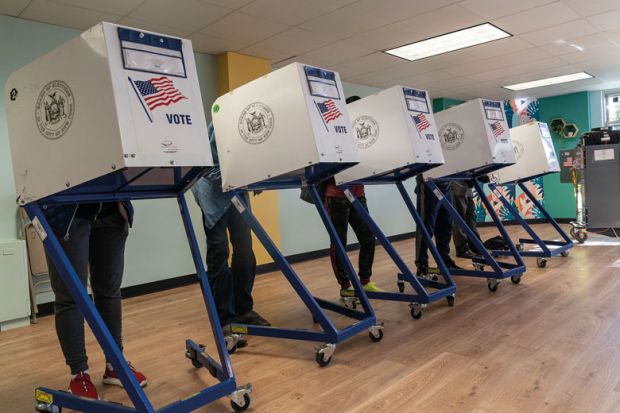Student voters appear to have played central roles in several key victories in this year’s US elections, earning them hopes for improvement on affordability and equity in a political environment that generally appears unlikely to produce major policy breakthroughs.
The election saw Republicans take back control of the House of Representatives from Democrats, toughening the pathway for legislative progress. Yet experts saw some compromises as possible, especially on college costs, aided by signs that young Americans and college students in particular are largely maintaining their higher voting rates of the Trump era.
“They certainly have come out and shown that they are a force to be reckoned with,” Jared Bass, senior director for higher education at the Center for American Progress, a thinktank, said of younger voters. “That that was read loud and clear, certainly within both liberal and conservative circles.”
Areas where Democrats and Republicans might find common ground, said Mr Bass, include cost reductions in loans for postgraduates, new grant aid for students in short-term college programmes, improvements in data on institutional performance, and new funding for job-centred training at community colleges.
“Even though there isn’t going to be a windfall of legislative opportunity, that doesn’t mean that there still won’t be opportunities worth looking at,” he said.
The Center for Information and Research on Civic Learning and Engagement at Tufts University estimated that 27 per cent of Americans aged 18 to 29 voted in this round, just behind the record of 31 per cent set in 2018 for a midterm poll. Such voters overwhelmingly favoured Democrats, by 62 per cent to 35 per cent, making them a critical part of the nationwide result in which Democrats held back the usually large midterm victory experienced by the party not in control of the White House.
The centre’s data showed the youth vote to be especially critical in several close key races, including contests for the Senate in Pennsylvania, Georgia and Nevada, and in the governor’s races in Wisconsin and Arizona.
In one of the most consequential election outcomes for higher education, voters in Arizona narrowly approved granting undocumented college students the right to in-state tuition fees.
In their governor’s race, Arizona’s voters also narrowly rejected Kari Lake, a Republican overtly hostile to Arizona State University and its president, Michael Crow, a leading reformer in US higher education whom she has castigated as excessively tolerant of liberal ideas.
But other caustic critics of higher education and its alleged ideological biases won races, most notably Ron DeSantis, a widely expected 2024 candidate for US president, in his gubernatorial re-election race in Florida.
Democrats nevertheless held control of the Senate, leaving Bernie Sanders – a two-time US presidential candidate and outspoken advocate of free college – as the likely next chair of its education committee.
Republicans will have relatively little power in Washington with just control of the House, although that gives them considerable investigative powers they intend to use challenging programmes promoting student debt relief, and racial and gender equity in higher education. Their oversight also is expected to put a heavy focus on China, which could dampen hopes on US campuses for any revival in the sharply declining numbers of Chinese students. Their House control also could jeopardise some promised large increases in federal spending on scientific research, although no major cutbacks are expected.




